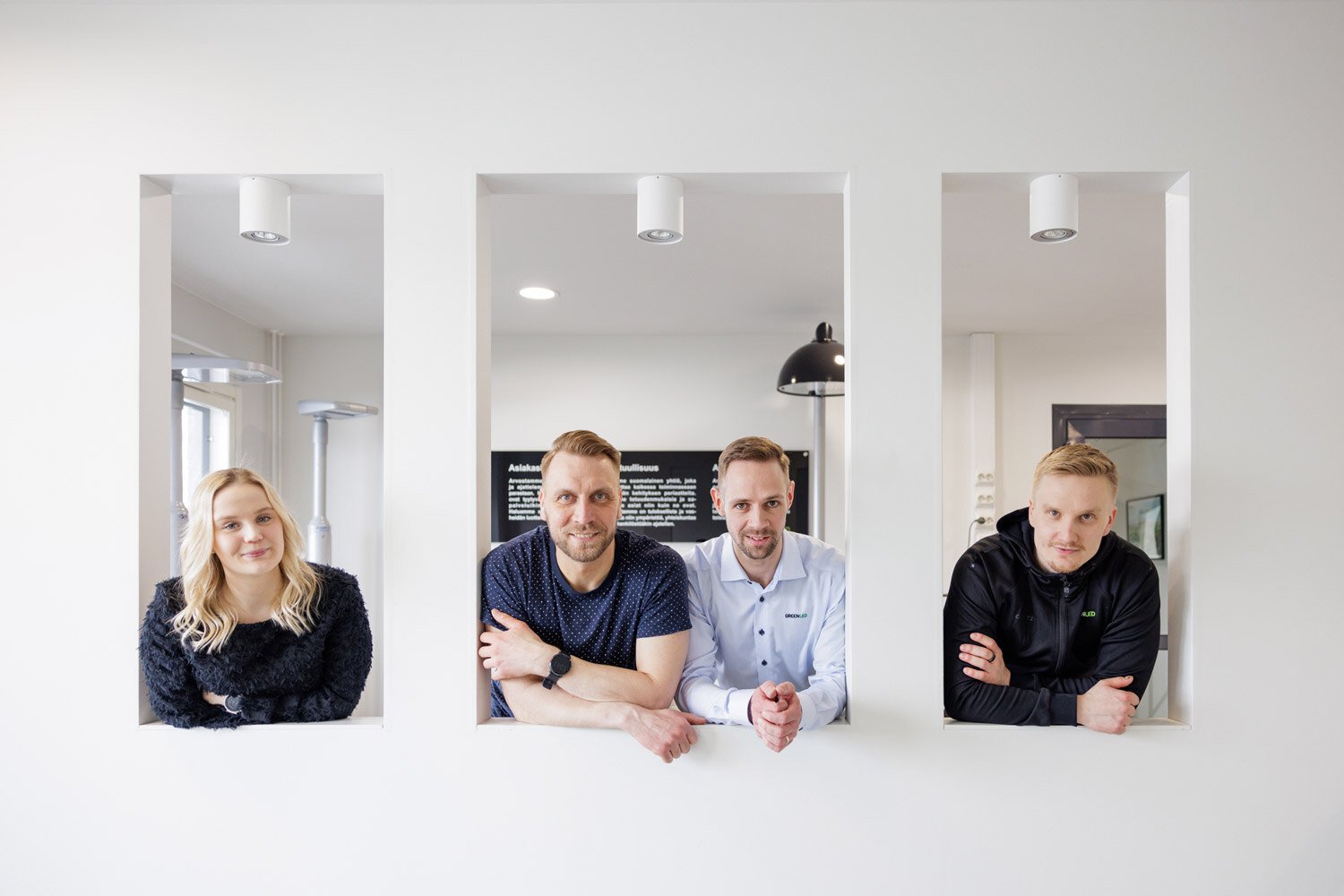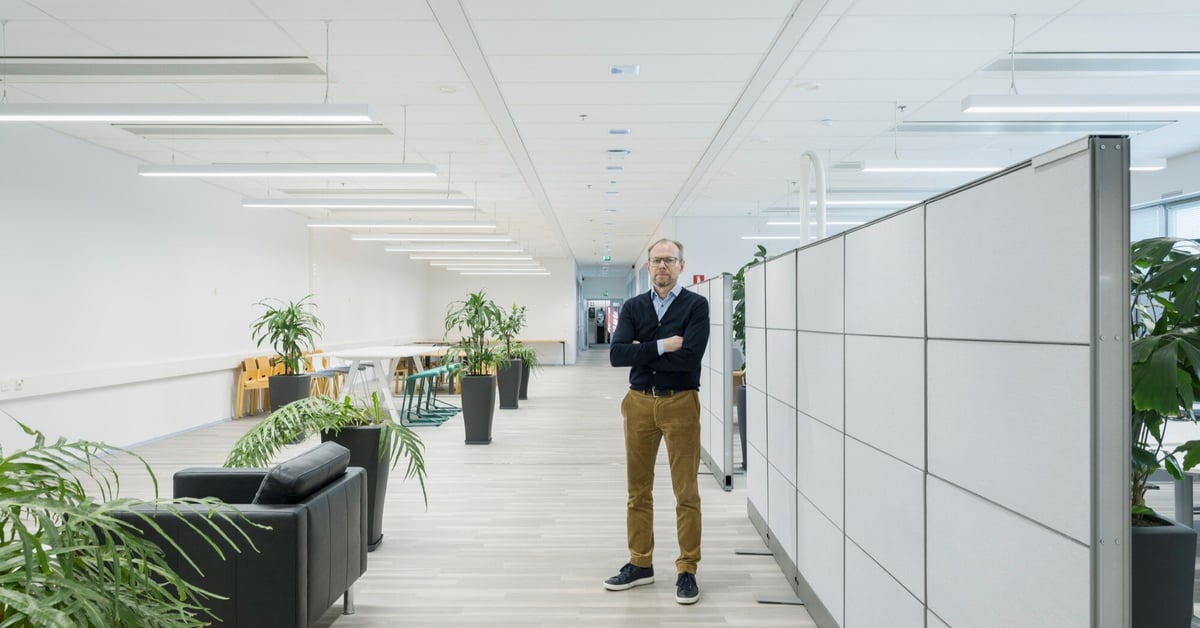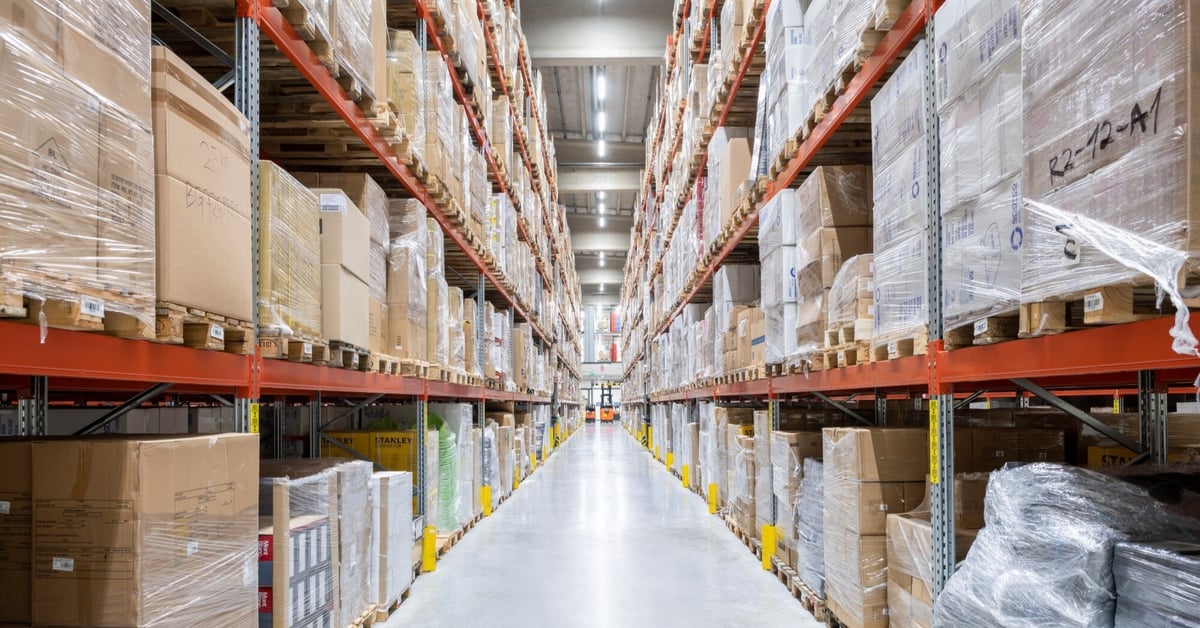“Rarely do people personally thank me when I visit a site after commissioning. But here, the safety manager treats us to ice cream when we stop by.”
Kalle Ojamo, Greenled Oy
A modern lighting system in workplaces and production facilities plays a crucial role in improving work safety and comfort—so the ice cream is well deserved. A well-designed and properly implemented lighting solution also enhances productivity, a valuable aspect for any business, and Inex is no exception.
“The old lighting left some areas almost completely dark. Now, there are no blind spots, so it’s clear that workplace safety has improved.”
Petri Pitkänen, Property Manager, SOK
The phase-out of fluorescent tubes accelerated the decision to upgrade
When the Inex daily goods logistics center opened in the summer of 2016, it was the largest and most modern facility of its kind in Finland. It was awarded the Tekla BIM Award for its digital modeling design, and from the very beginning, great attention was paid to ergonomics and workplace safety. The logistics center for non-food goods, which was built four years earlier, is also equipped with state-of-the-art building technology and automation systems. Yet, the lighting systems in both facilities were due for an upgrade.
“One reason for the system upgrade was the upcoming ban on the sale of fluorescent tubes within the EU in August this year. However, in the grand scheme of things, this was only a minor factor. The real reasons were the benefits of a more efficient and demand-based lighting system—not to mention that we now save 65% in energy costs, and even 75% in outdoor lighting.”
Kalle Ojamo, Greenled Oy
The new LED lights significantly reduce electricity consumption compared to the previous T5 fluorescent tubes, which were the primary light source in Inex's facilities. However, an equally significant source of savings comes from the DALI-based Osram Encelium control system, which enables lighting adjustments and control based on facility usage. In total, energy savings amount to two-thirds or even three-quarters, which is a major environmental benefit.
“For example, in production areas, the old fluorescent lights were constantly on. This not only consumed a lot of electricity but also caused unnecessary heat buildup, increasing the need for additional cooling in the summer—leading to even more energy waste. One of the key reasons for the system upgrade was energy savings. Our calculations showed that the savings would be significant.”
Petri Pitkänen, Property Manager, SOK
A demanding project—zero errors
Upgrading the lighting system of two massive logistics centers is no small task. In total, 10,620 old fluorescent tubes were removed and replaced with a smaller number of LED luminaires. The lighting output doubled or even tripled in some areas, while the light quality significantly improved, eliminating dark corners in the buildings.
One of the biggest challenges was ensuring that the logistics centers' operations remained uninterrupted. This was especially critical for the daily goods center, where food and products must move continuously, without disruption. The demanding nature of the project meant that only a few suppliers could realistically handle it.
“By the time we reached the bidding stage, only suppliers with a proven capability to manage such a large and complex project remained in consideration,” says Petri Pitkänen. “We didn’t just look at the price—we evaluated the whole package. Greenled had excellent references and top scores. In the end, the choice was straightforward.”
When the installations were completed just before Christmas 2022, the project’s overall impact was reviewed. The number of operational disruptions caused by the installation? Zero.
"Not a single error," confirms Kalle Ojamo.
The key to this flawless execution was the careful planning that took place after completing the lighting upgrade for the non-food logistics center. That project served as a blueprint, enabling detailed pre-planning and Swiss-watch precision scheduling for the daily goods center.
“The most important factor was continuous and effective communication between us and the client,” says Ojamo. “We held weekly meetings regularly, and if needed, we kept in touch outside those meetings as well.”
“Communication throughout the project was excellent,” Pitkänen confirms. “The best part was that not everything had to go through me. Instead, Greenled’s installer consulted directly with the production staff—the people whose work was directly affected by the changes. That was an incredibly smart way to operate.























